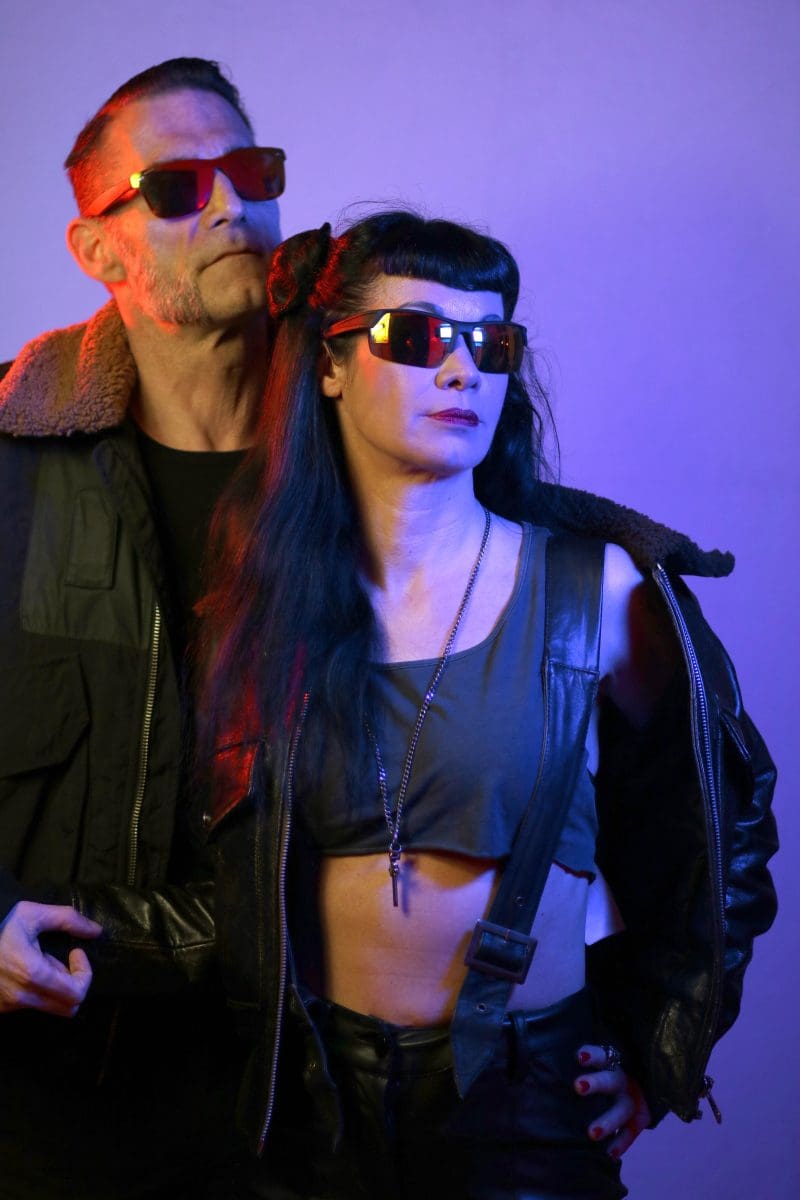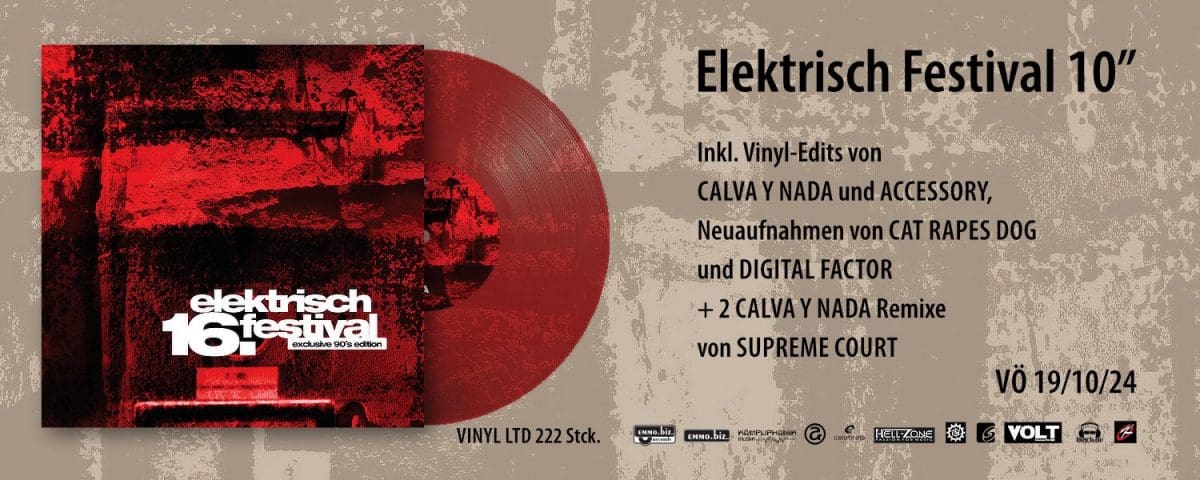Digital Factor interview about 30 years of complete electronic mayhem

Digital Factor interview about 30 years of electronic mayhem
(Photos by Carsten Schenker) The German electronic act Digital Factor added a few weeks ago another milestone to their already fruitful career with their brand new album “GBA” in the form of a charity project. High time to have a chat with electro pioneer Mike Langer, the main person behind this project.
You can download the album from Bandcamp or order it on CD from the Alfa Matrix label.
SL. Can you tell us more about the decision to make your new album, “G.B.A.-General Behavior Abrogate,” a charity project and donate all proceeds to the foundation for disadvantaged children (www.kinderstiftung-altenburg.de)? What inspired this choice?
Basically, I wanted to do something special for Digital Factor’s 30th anniversary. I have been following the work of the foundation for years and am also partly active in it myself. You appreciate this work when you have children of your own who can fulfill (almost) every wish. But unfortunately there are also children in the western world who need help. This is where the foundation comes in and with Como Vento, a drum group that also appears on “G.B.A.” is represented, it shows itself best. Here, the foundation helped finance the instruments at the beginning of the group. Now children from different social classes and different backgrounds come together and travel all over Germany. Such investments by the foundation must definitely be supported.
SL. The album features collaborations with various local artists from Altenburg. How did this collaboration process unfold, and how do you think it influenced the overall sound and vibe of the album?
Before it was clear who would be on the album, I wrote the songs and produced the first layouts. I implemented what I wanted to implement as a digital factor on this album. So I didn’t take any “consideration” into who would be singing in the future. Ultimately, I assigned the songs to the artists and the individual pieces developed their own power. After listening to the song hundreds of times before recording the lyrics, they were suddenly completely new. So somehow I lumped Digital Factor together and got Digital Factor plus X back. I think the experiment was very successful. Ultimately, everyone involved is also good friends, which is of course particularly fun when you work with them.
SL. “G.B.A.” marks a departure from the dystopian themes of your previous work. What prompted this shift towards more hopeful and positive messages in the lyrics, and how do you believe it reflects the current times?
Up to now, as an artist, I always wanted to put a finger in the wound and therefore dedicated my texts very much to dark dystopias. In the meantime, in Germany and worldwide, it is mainly populists who rally supporters behind them with dystopian predictions and such. If a billionaire like Donald Trump sees himself as being persecuted by the “system,” then as an artist you have to take a different position. And so it was important to me, despite all the problems that really exist, that there is also good in the world. I experience this every day in my environment. People who have ideas, people who don’t complain but do something about problems or people who do things without ostensibly having an advantage, all of this needs to be valued much more today than it was a few years ago. This also fits into the overall concept of “G.B.A.” in collaboration with the foundation.

SL. You mentioned a significant remodeling of your studio and a focus on using analog synthesizers for this album. Could you delve into the production process a bit more? How did you approach transforming the production technologies of the 80s into the contemporary sound of Digital Factor?
I was socialized musically in the 80s and so the music of that time particularly touches me. After all, the 80s are considered the most influential musical decade in the history of pop and rock. The arrival of the synthesizer and the drum machine, the development of the alternative scene, the music video, the arrival of digital technology in the studios and the introduction of the computer, available to everyone, all of these changed the music scene and date back to the decade. I was mainly interested in the beginnings of electronic music. Back then, many synthesizers couldn’t store sounds. At the same time, many synths could not be controlled remotely via MIDI. So a bass or lead line had to be recorded by hand for the entire song. At the same time, many artists only had one synthesizer, so they had to get everything bass, lead or drums out of the machine. “G.B.A.” 95 percent is recorded exclusively with hardware synthesizers (i.e. very few computer plug-ins). I used synthesizers like the Arp Odyssey, the Korg MS-20 or the MonoPoly, none of which can store sounds. My analog drum machine doesn’t save any sounds either. This means that the songs on the album are unique. If I were to re-record them today, they would always sound a little different. Sometimes I recorded short sequences or song lines by hand so that they would always sound different. For many of the rhythmic sequences, I connected the synths to each other in a modular manner via CV (controlled voltage), so that the resulting loop or similar from one device is influenced by another synth. Nevertheless, with today’s computer technology it is ultimately much easier to record than, for example, in 1980, but I gave the synthesizer nerd in me a lot more room. You can probably hear this best in “The World Is Analog”. Here I wanted to 100 percent only use my analog synthesizers. The bass drum, snare and hi-hats also come from my Arp Odyssey, a synthesizer from 1972.
SL. The album features contributions from your daughter Josephine. How did this collaboration come about, and what does it mean to you to involve family members in your musical projects?
In a way, Digital Factor is also a kind of family project. After all, my family has to do without me when I work in the studio. My wife is a graphic designer and has been doing the artwork for Digital Factor’s publications for years. My son isn’t really an artist, but he’s kind of the administrator in my studio. I can discuss technical solutions and details with him and he is much neater than I am when it comes to laying cables. Josephine is more of an artist in the next generation. She plays theater and would like to be part of every Digital Factor album. She also appears in numerous music videos (e.g. “Ouvre”). Ultimately, we and all of our friends are in a kind of artistic community within which my children are growing up. Of course that rubs off.
SL. As a band with a 30-year history, how do you see “G.B.A.” fitting into the evolution of Digital Factor’s sound and identity? In what ways does it build upon your previous work, and where does it chart new territory?
Digital Factor has developed over 30 years just as I have developed musically and in my use of synthesizers and drum computers. I would find it massively boring if I were or could only publish the 1993 copy today. For the 30th anniversary album, I built my “dream studio” in my house, which is constantly being optimized and rebuilt. All of this will continue to influence Digital Factor’s future releases. The tragedy is that I have more ideas than time, but I still try to implement as much as possible. The connection between Digital Factor and the people around the project as an audiovisual project will play an even greater role in the future. “G.B.A.” was a trigger, so after a few years of not performing live, I’m back on stage more often and developing ideas and projects with other musicians and artists. “G.B.A.” was the start of the next exciting 30 years, although I have to do the math again to see whether it will still work given my age.
Since you’re here …
… we have a small favour to ask. More people are reading Side-Line Magazine than ever but advertising revenues across the media are falling fast. Unlike many news organisations, we haven’t put up a paywall – we want to keep our journalism as open as we can - and we refuse to add annoying advertising. So you can see why we need to ask for your help.
Side-Line’s independent journalism takes a lot of time, money and hard work to produce. But we do it because we want to push the artists we like and who are equally fighting to survive.
If everyone who reads our reporting, who likes it, helps fund it, our future would be much more secure. For as little as 5 US$, you can support Side-Line Magazine – and it only takes a minute. Thank you.
The donations are safely powered by Paypal.











